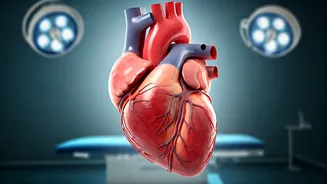Sweat: An Overview
Sweating, or perspiration, is the body's natural cooling mechanism, crucial for regulating internal temperature. This process involves the release of a watery
fluid from sweat glands onto the skin's surface, where it evaporates, thus cooling the body. The amount of sweat produced varies significantly among individuals and is influenced by a range of factors. These include environmental temperature, physical activity levels, and even emotional states. Understanding the basics of sweat production is the first step toward interpreting individual sweat patterns and identifying any deviations from the norm. The process is not just about temperature control; sweat also helps eliminate waste products from the body. These waste products include excess salts and minerals.
Normal Sweat Patterns
The amount of sweat that's considered 'normal' can vary. Generally, a person might sweat moderately during physical activity or in a hot environment. The key is to notice your personal baseline and any significant changes. Factors such as sex, age, and genetics play a role. Men, for example, tend to sweat more than women due to differences in body composition and hormonal influences. Normal sweat is usually clear and odorless. Sweat odor is often caused by bacteria on the skin breaking down sweat. Different people may experience different degrees of wetness and the areas that sweat most heavily differ, too. Regular exercise often leads to the body becoming more efficient at sweating. This means that a conditioned individual might sweat more profusely, but it's a sign that their body is effectively regulating its temperature.
Factors Affecting Sweating
Several factors can influence how much you sweat. These range from external conditions to internal health aspects. Environmental temperature is a primary driver; hotter climates and direct sunlight stimulate sweat production. Physical activity also leads to increased sweating as the body works to cool itself. Emotional states like stress, anxiety, or excitement can cause a sudden surge in sweating. Certain medical conditions, such as hyperthyroidism or diabetes, can also increase sweat production. Medications, including some antidepressants and blood pressure drugs, may have the side effect of increased sweating. Diet also plays a role, with spicy foods often triggering perspiration. Understanding these factors will help you recognize what’s normal for you and what might be a cause for concern.
When to Be Concerned
While sweating is usually harmless, some changes in sweat patterns may signal underlying health issues. Excessive sweating, known as hyperhidrosis, can lead to social discomfort and practical challenges. If you find yourself sweating excessively even when not exercising or in a hot environment, it’s worth consulting a healthcare provider. Reduced or absent sweating, known as hypohidrosis or anhidrosis, can also be a cause for concern, as it impairs the body's ability to cool itself, which can lead to overheating and heatstroke. Sudden changes in sweating patterns, especially when accompanied by other symptoms like unexplained weight loss, fatigue, or chest pain, should be investigated by a medical professional. The color or odor of sweat can be another indicator. Sweat that is unusually yellow or has a strong, unusual odor could suggest a medical problem.
Managing Sweat Effectively
Several strategies can help manage sweat effectively. Over-the-counter antiperspirants, containing aluminum-based compounds, are a first-line defense for excessive sweating. These work by temporarily blocking sweat glands. If over-the-counter options aren’t sufficient, a healthcare provider might prescribe stronger antiperspirants or other treatments. Maintaining good hygiene, including regular showering and wearing breathable fabrics, can minimize odor and discomfort. Staying hydrated is also essential, especially when exercising or in hot conditions. Regular exercise can improve your body's ability to regulate its temperature, which can help in the long run. Identifying and managing underlying medical conditions that might contribute to excessive sweating is also crucial. Consider keeping a sweat diary to help you identify triggers and patterns of sweat production.












